Terrarium - My First Terrarium Experience & a DIY Guide
I have always been fascinated by nature, it keeps you and remains calm but can get violent at times. Although it can't be tamed but can certainly be mimicked into self-sustaining eco-systems. How beautiful is the concept of looking at a nature itself atop your bookshelf or your side table?
I wanted to build myself an aquarium and i didn't have what it takes to make one. I did not have any skills or the tools to make one. I did not want to spend money making one, so I ventured into collecting the material required to build one.
Step-by-Step Guide to Building a Terrarium
If you're interested in building your own terrarium using natural, readily available materials, here's a simple guide to get you started:
Materials You’ll Need:
A clear container (glass jar, bottle, or any transparent container)
Small stones or gravel
A thin layer of charcoal ( if you are planning a closed lid eco-system)
Soil (well-draining)
Moss and/or small plants
Decorative elements (twigs, stones, pinecones, driftwood)
Water (preferably rainwater or distilled)
Instructions:
Clean the Container: Wash and dry your container thoroughly with soap and hot water. This helps prevent mold or bacterial growth inside your terrarium.
Create a Drainage Layer: Place a layer of small stones or gravel at the bottom of the container. This helps with drainage and prevents water from pooling around the roots.
Add Charcoal (Optional): If you have access to charcoal (from a campfire or barbecue), crush it into small pieces and spread a thin layer over the gravel. This helps keep the terrarium fresh by absorbing excess moisture and odors.
Add Soil: Gently add a layer of soil over the charcoal and gravel. Use about 3-5 cm, depending on the size of your container. Make sure the soil is loose and well-draining.
Plant the Moss and Other Plants: Carefully place your Moss on top of the soil. If you’re adding other small plants (like ferns or Polka Dot Plants), dig small holes and plant them gently. Ensure they have enough space to grow.
Decorate: Add twigs, stones, or pinecones to create a natural, miniature landscape. Be creative and arrange the elements to mimic a forest floor.
Water Lightly: Use a spray bottle or sprinkle water lightly over the moss and plants. The soil should be moist but not waterlogged.
Close or Leave Open: If you’re using a jar with a lid, close it for a closed terrarium that retains humidity. If your container doesn’t have a lid, you’ll need to water it more frequently.
Maintaining Your Terrarium
Light: Place your terrarium in a spot with bright, indirect light. Direct sunlight can overheat the terrarium and harm the plants.
Watering: Closed terrariums require minimal watering. If you see condensation on the inside of the glass, it’s a sign that the humidity level is just right. Open terrariums will need occasional misting.
Ventilation: For closed terrariums, occasionally open the lid to allow fresh air in and prevent mold.
Pruning: Trim any plants that grow too tall or start crowding the space. Regular pruning keeps the terrarium looking neat.
Mold/Fungus: If you see mold or fungus growing inside, clean the area immediately and discard that particular patch of moss, ventilate it, and expose to light.
Lessons Learnt!
Creating my first terrarium was a rewarding and satisfying experience, specially when I did not buy any material and tools to build it. It allowed me to connect with nature in a new way and gave me a deeper appreciation for the nature we often overlook.
I didn’t have to spend a cent—just a little time and creativity. If you’re looking for a simple, meditative project that brings a bit of the outdoors inside, I highly recommend making your own terrarium. You’ll be surprised by how much joy a small jar of greenery can bring!
Some lessons and tips I would love to mention.
1. Don’t overwater — moss and many terrarium plants prefer slightly moist conditions, not soggy.
2. Experiment with different natural elements you find during walks.
3. Charcoal is very effective to keep the mold away and keep ecosystem clean.
4. Imperfections - Since nature is not perfect, do not try to be perfect with your little creation. Let it be imperfect. Have fun and don’t stress about perfection. Nature thrives on imperfections.
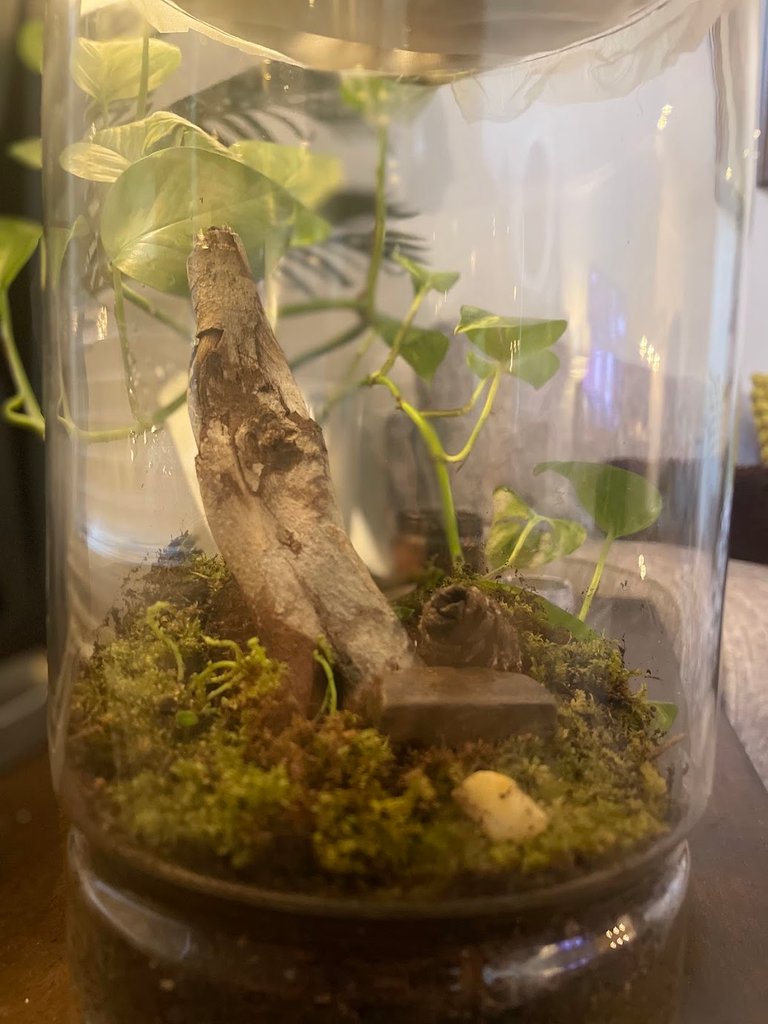
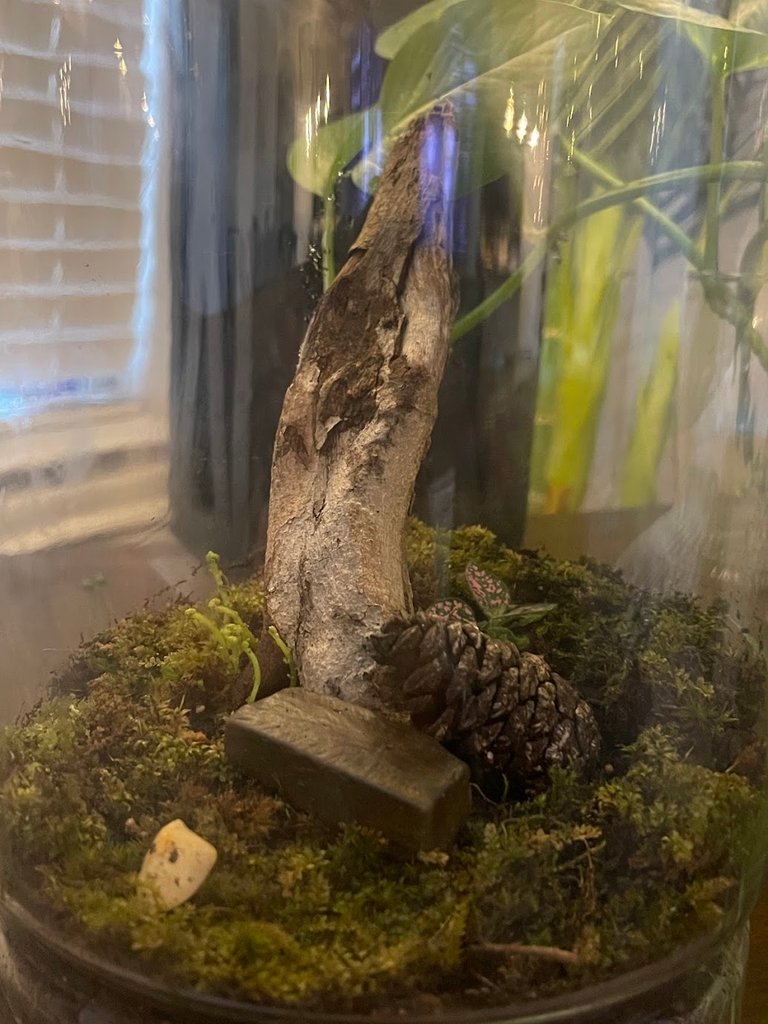
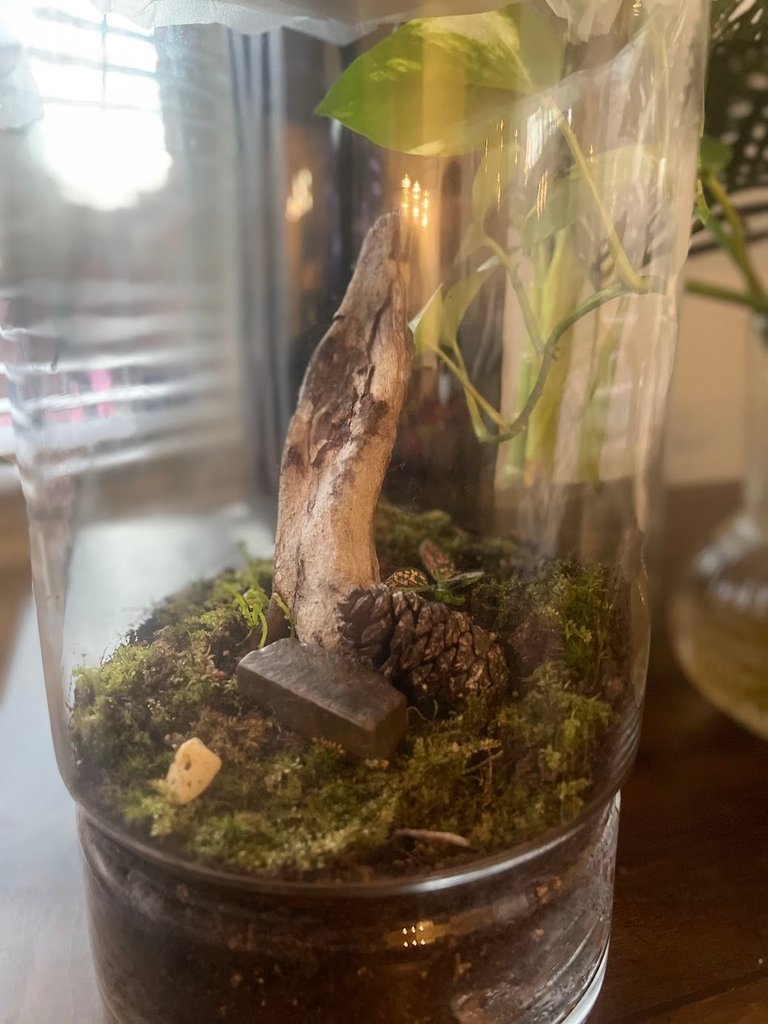
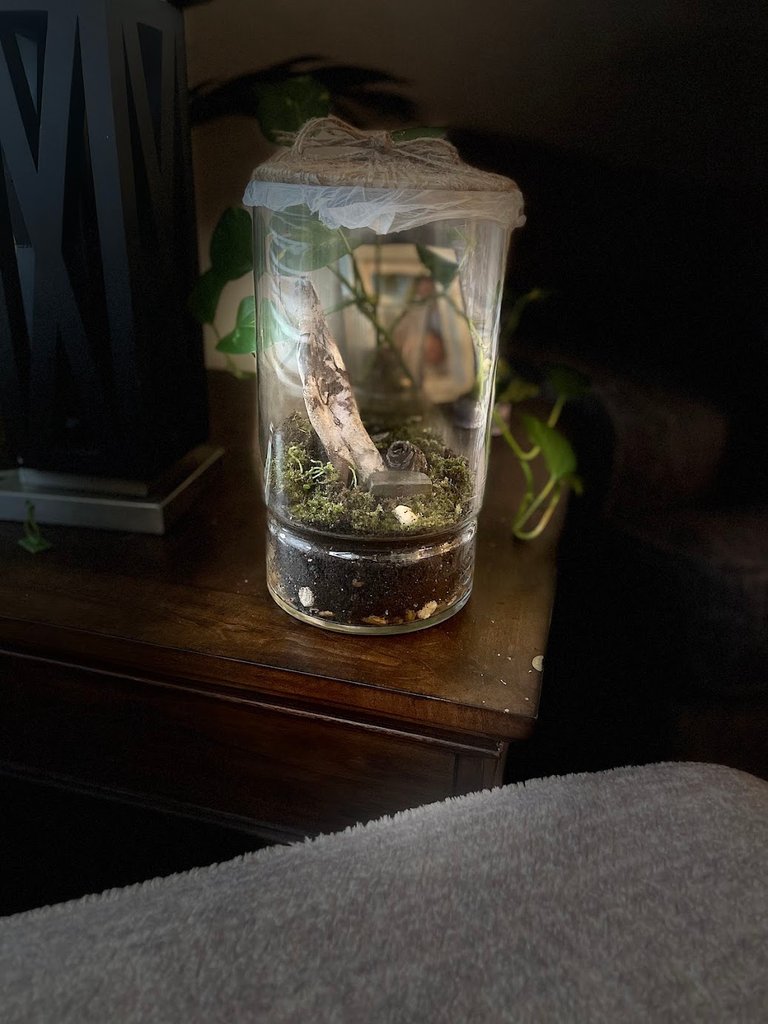
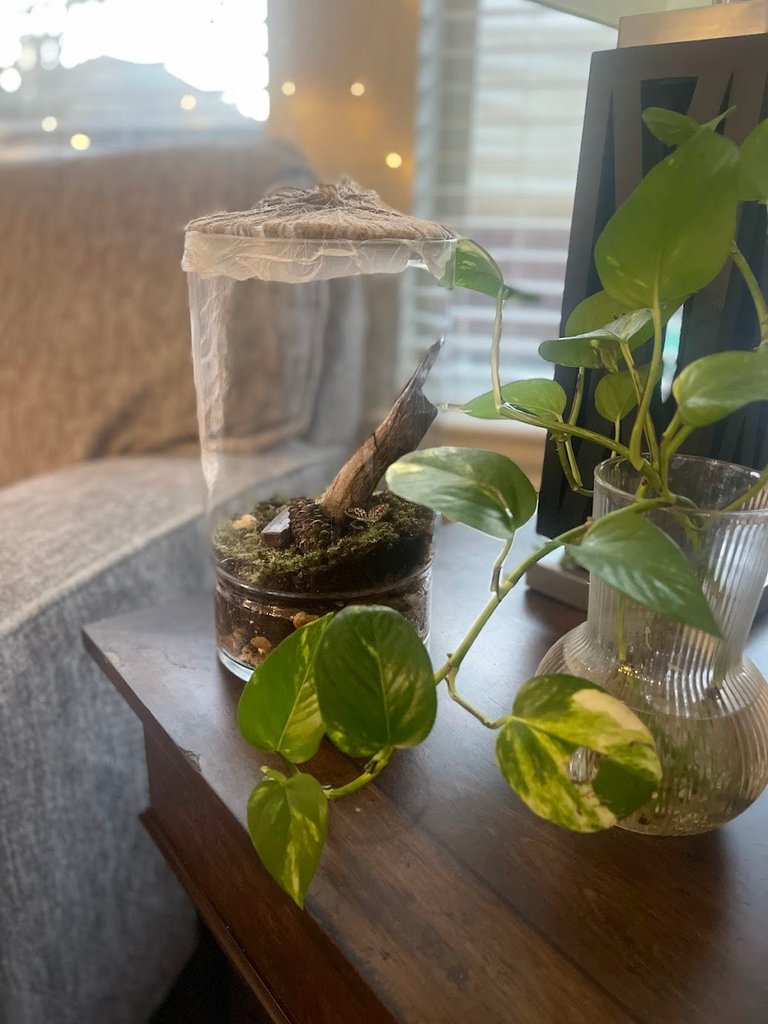
Sending Love and Ecency Curation Vote!
 Follow Eceny's curation trail to earn better APR on your own HP. : )
Follow Eceny's curation trail to earn better APR on your own HP. : )
Love what you're sharing 💖